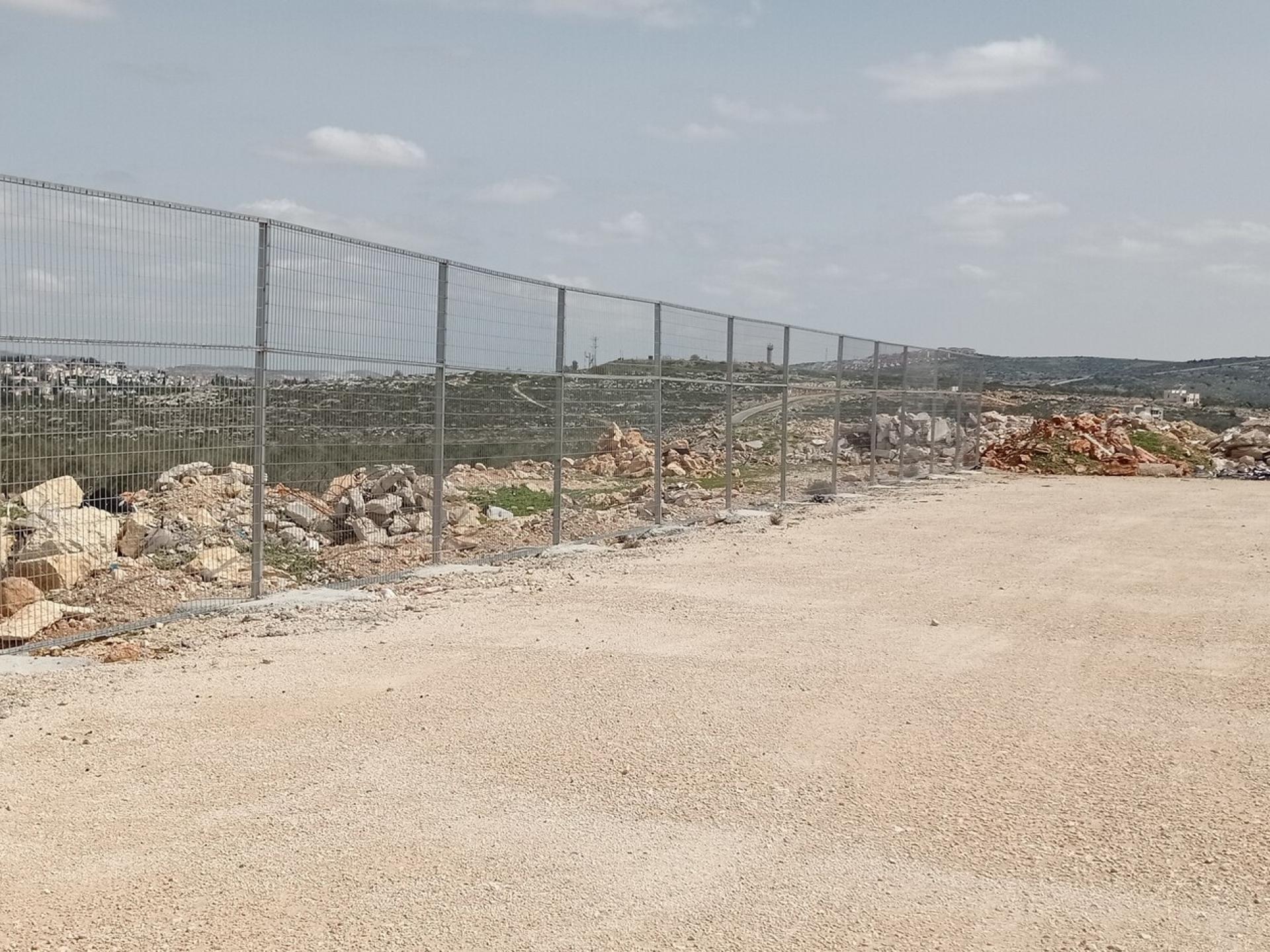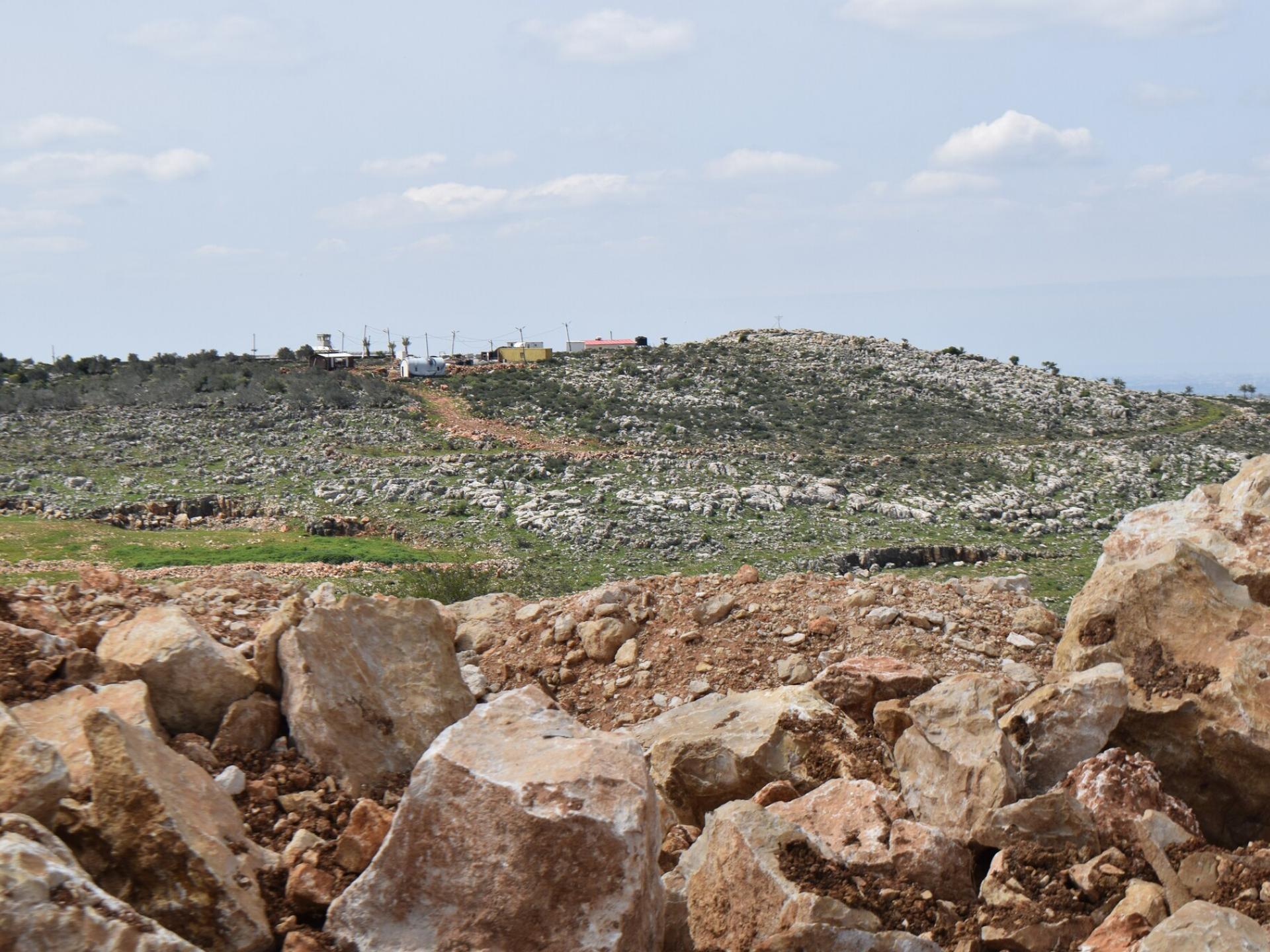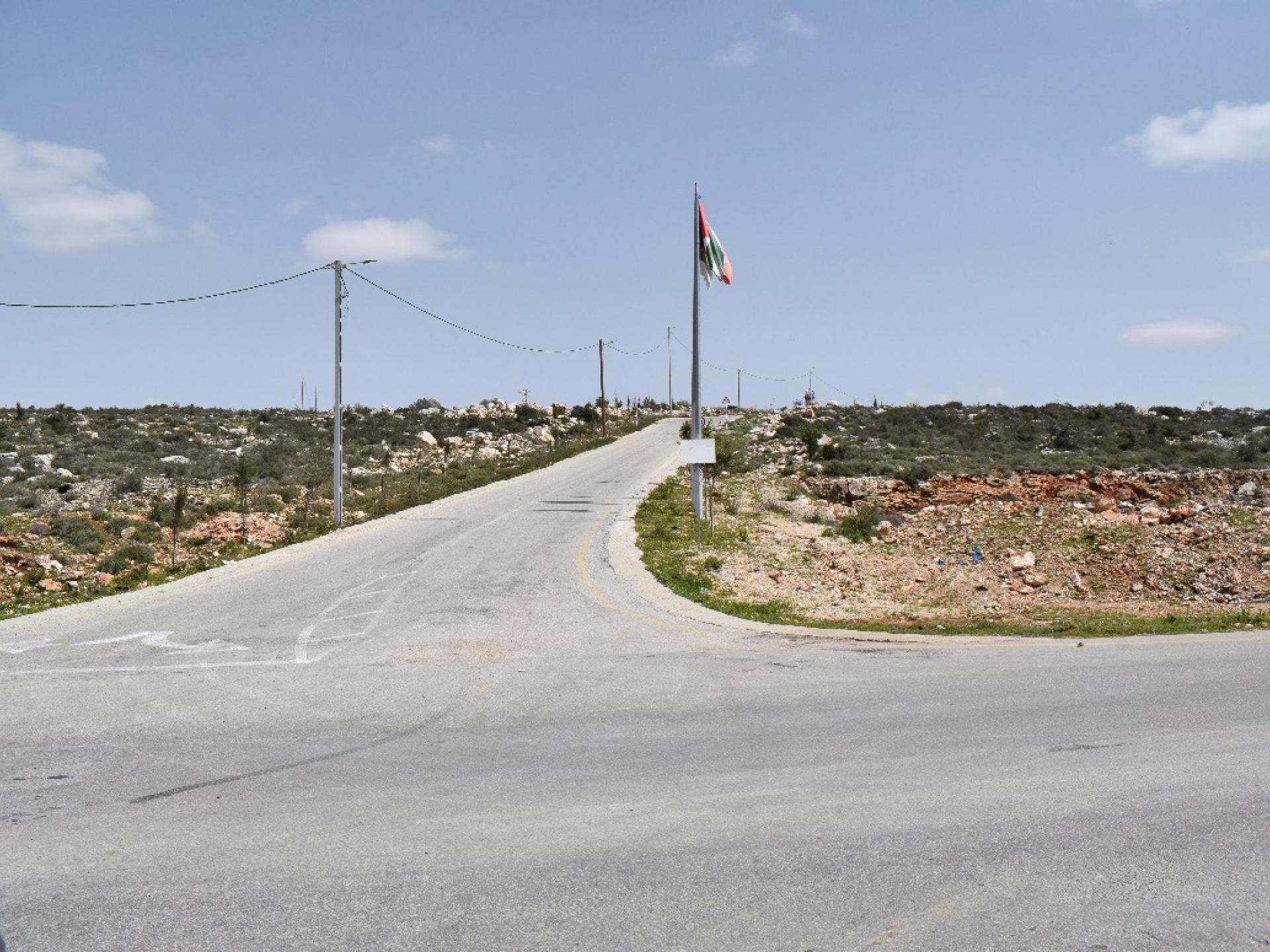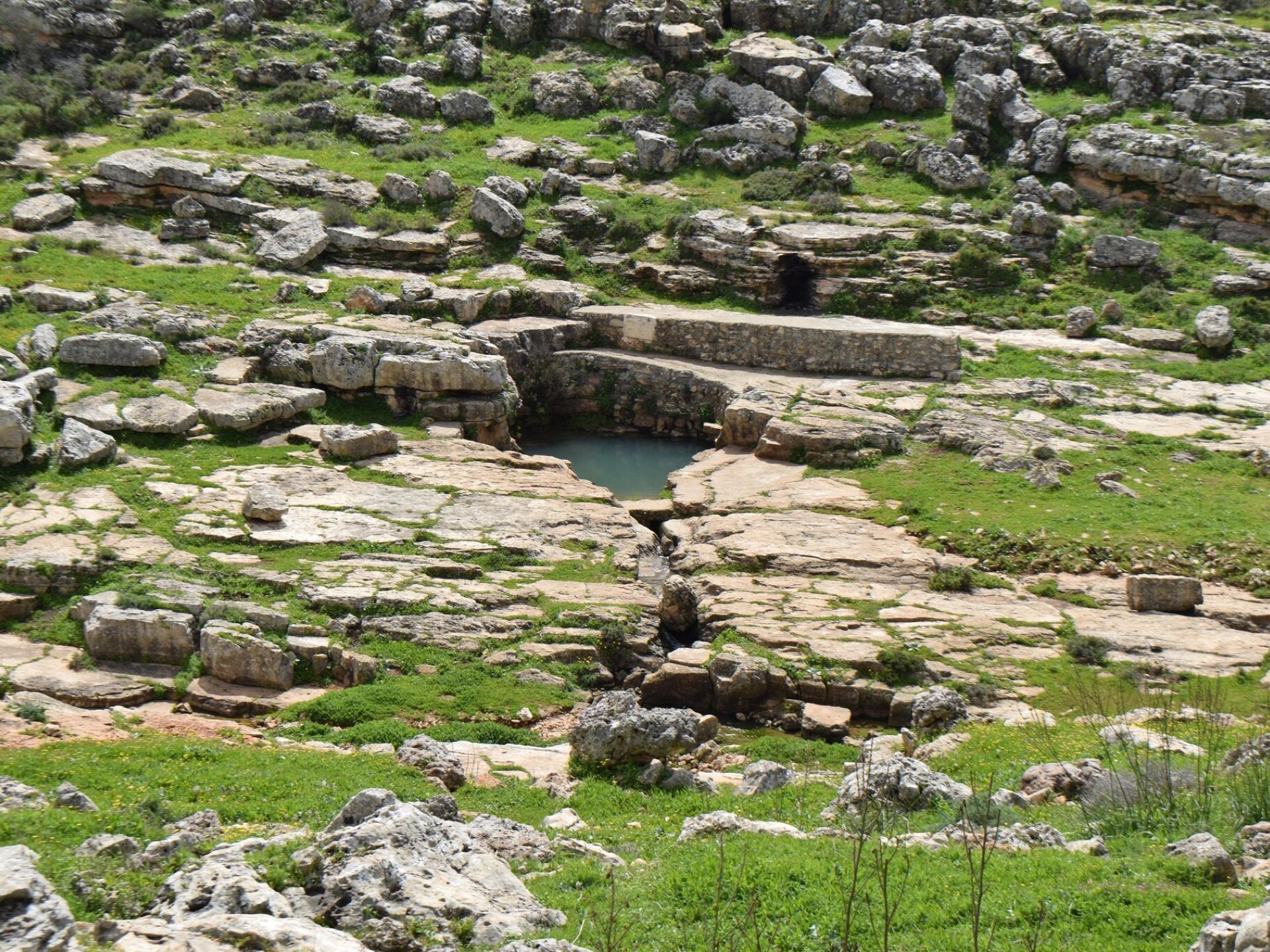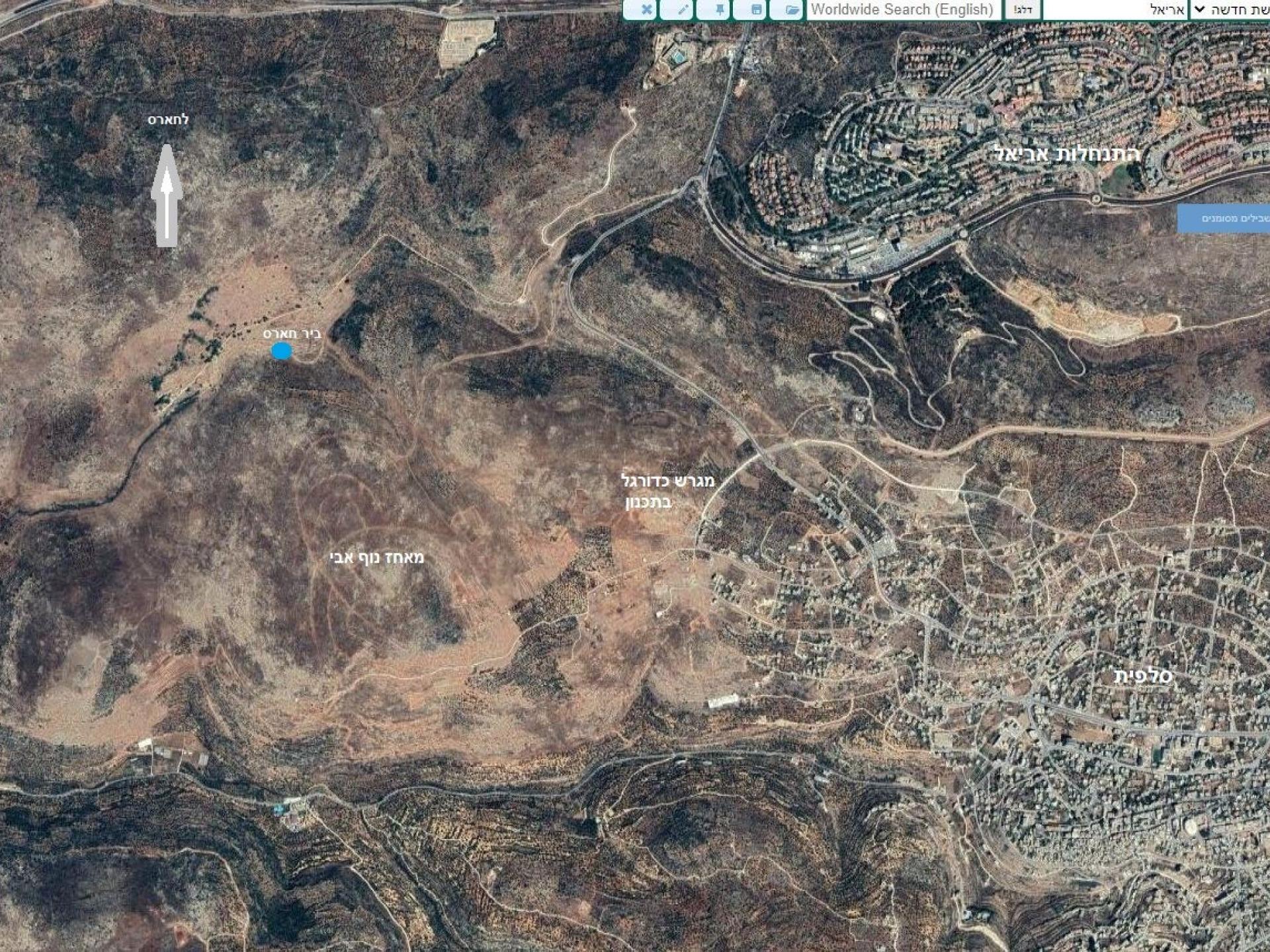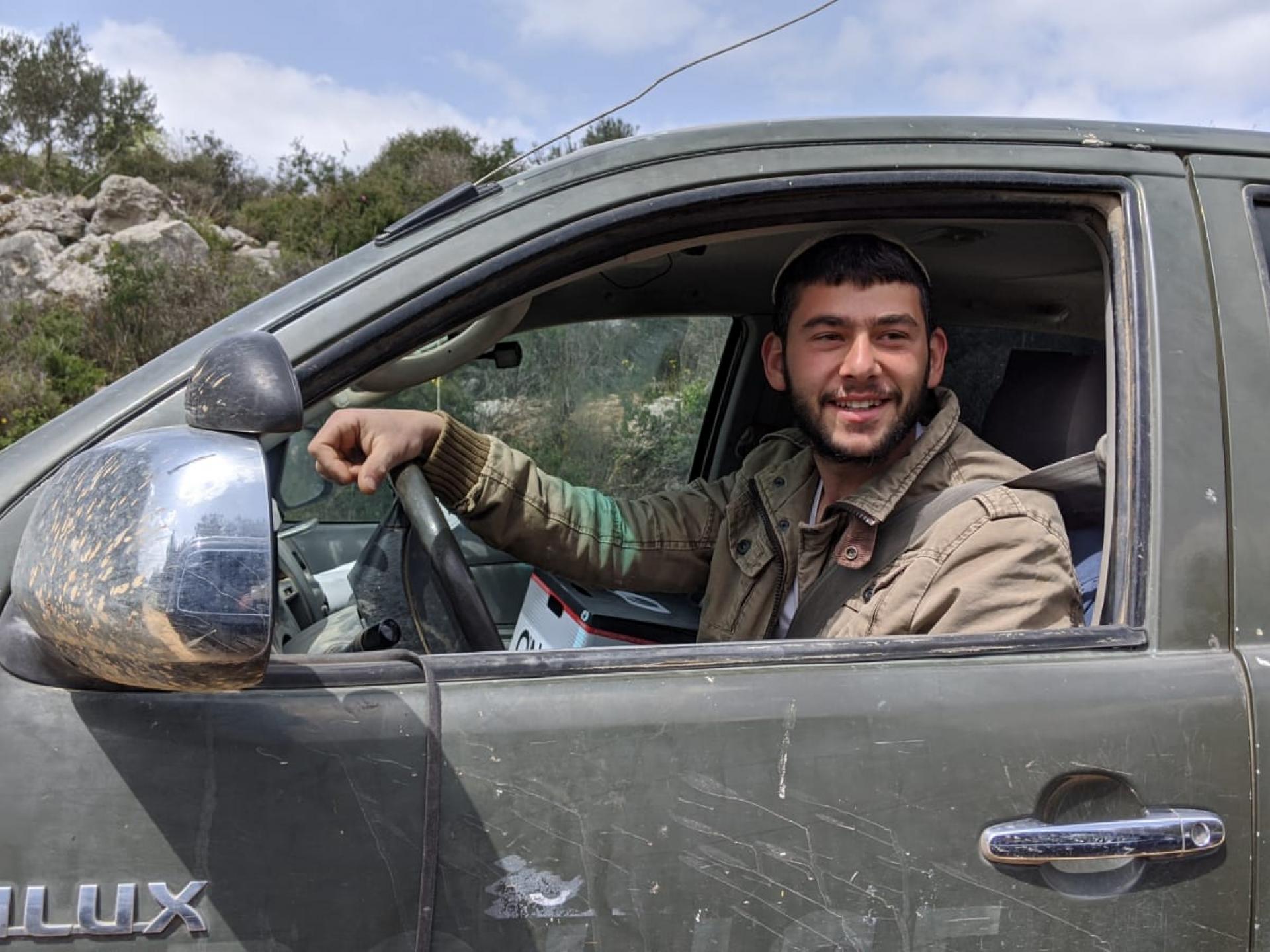Salfit used to be an important district city
We drove to the Salfit area with Issa, from Haris.
He tells us Israel wants to choke Salfit. It had been an important city in the district. The governor’s offices are located there. It serves many area villages. Some are on the other side of Highway 5 which, since it was opened, severely impacts the residents’ lives. Lands originally intended for the city’s growth were expropriated, preventing the town from expanding.
Israel’s activity in the area makes Salfit residents fear the town will no longer be a district center, but become a satellite of the Ramallah district. Issa showed us examples along the way that support those fears.
We first came to an area where a huge soccer field was being constructed, one planned to meet international standards, and whose construction had been eagerly anticipated.
Work has now been stopped because Israel objected to development in the area and threatened to demolish it if the work continued. The map shows the field to be located beyond the boundaries of Salfit as defined by Israel.
From where we stand we can see the Nof Avi outpost, erected a year ago. It’s characterized as a farm, part of the plan to take over extensive areas by grazing flocks and prevent access to Palestinians. Hagar Shizaf reported in Ha’aretz four months ago that there were two structures and a sheepfold on site. The article noted that two Thai workers were seen there.
Slightly below the outpost, a single house was visible, surrounded by olive trees. The house is owned by a resident of Salfit. Issa said there had been demonstrations there against the outpost. In response, settlers uprooted and burned many of the olive trees belonging to the owners. The house is empty today due to fear of the settlers.
When we drove through an open area north of Salfit Issa called our attention to a road running between land recognized by Israel as part of Salfit, and land that is part of the Ariel settlement. The photograph shows electric poles beside the settlement’s road.
From there we continued toward a wadi with a pool known as Bir Haris. Palestinians refurbished it. The pool is located in the bed of the wadi, in a glorious landscape rich with vegetation. In rainy years water flowed until May. There’s currently no flow because of Mekorot’s pumping.
Palestinians from the area come on weekends to picnic. This past year settlers rediscovered the location. They descend, chase away the Palestinians and harass them. A month ago they seriously injured a Palestinian who had visited the site.
The pool was an important part of the lives of Palestinians from the area. When he was a child, said Issa, he taught himself to swim there. Women from Haris, including his mother, would come to the wadi bearing clay pots on their heads and return to the village having filled them with water. They would come with a bag of clothes, wash them in the wadi’s waters, and spread them to dry on the rocks (the pool is approximately two kilometers from the village).
An additional source of household water was cisterns in the homes’ courtyards. In 1986 a pipeline was laid to the town.
On our way to the road to Ariel a pickup truck driven by a settler drove toward us. He saw the Palestinian license plates on Issa’s vehicle, stopped beside us, and asked Issa what he was doing on this road. Issa replied: It’s none of your business. The settler, who identified himself as David, said that the area and the outpost are part of the Ariel settlement.
He’s actually correct. Thirty years ago Israel had declared the entire region, known as West Ariel, to be part of the Ariel settlement’s municipal area. Elkin, the new Minister of Housing, decided to authorize hundreds of dwelling units there. The outpost was established as an initial stage of that plan. On our way from the Salfit road to the main road to the settlement (the map names it Ron Nahman Way, after the settlement’s first mayor) was a long line of Palestinian vehicles waiting to turn onto the main road. It’s a narrow road, and vehicles coming from the settlement have a right-of-way.

